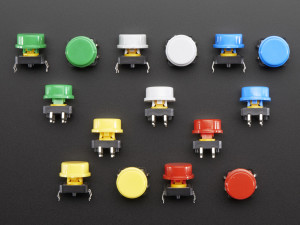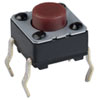Buttons are devices that allow you to open and close the circuit. You use them every day. ON the circuit is complete, off the circuit is open.
You can make a switch out of anything that conducts electricity. Paper clips make great switches for paper circuits with copper tape. Or you can use metal clothing snaps for sewing circuits like with the carrot. Or even Magnets like the duct tape bracelets. Tinfoil pressure plates.
Momentary switches like these are very common
These mechanical devices have 4 legs, which may make you think that there are 4 wires that are switched on and off, but in fact, two on each side are actually connected together inside. So really, this switch is just a 2-wire switch.
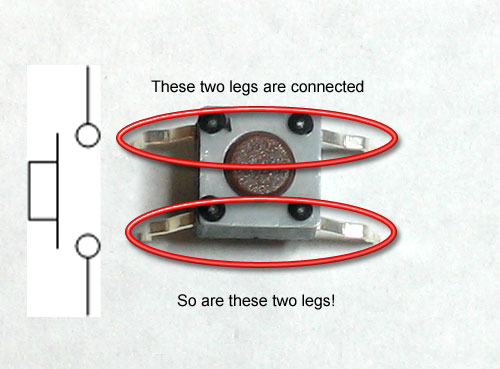
Normally, the two wires are disconnected (normally open) but when you press the little button on top, they are mechanically connected.
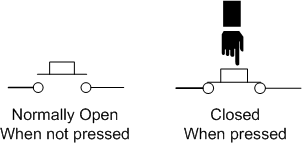
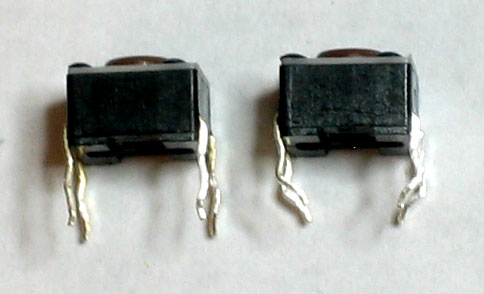
To get the buttons to sit better in the breadboard, you may want to straighten out the legs (just squish them with a pair of pliers) so that they look like the button on the left.
Tilt switches activates when mettle ball inside connects the two wires
And click switches that can turn things on or off when clicked
1. Get out your LED and resistor, as well as the tiny pushbutton and build a circuit . The LED should light up when the button is held down (current is able to flow) and go dark when it’s released (current is not able to flow).
2. Controle 3 leds at once with your button
3. remove the pushbutton an add a slide switch now configure it like an on/off switch
4. Create a circuit with two slide switches that either one will turn the led on . This is similar to how hallway lights work. You can turn on the upstairs and downstairs hallway light from either switch.
5.(crazy challenge) Make an LED brighter! A switch used to brighten an LED. Using two resistors reduces the resistance through the circuit brightening the LED.
Highlight below if you want a hint
This involves electricity always flowing through the higher resister and then going to the lower resistor when the button is pressed.
Longer Term projects: light up a diorama, create a cardboard robot…endless
